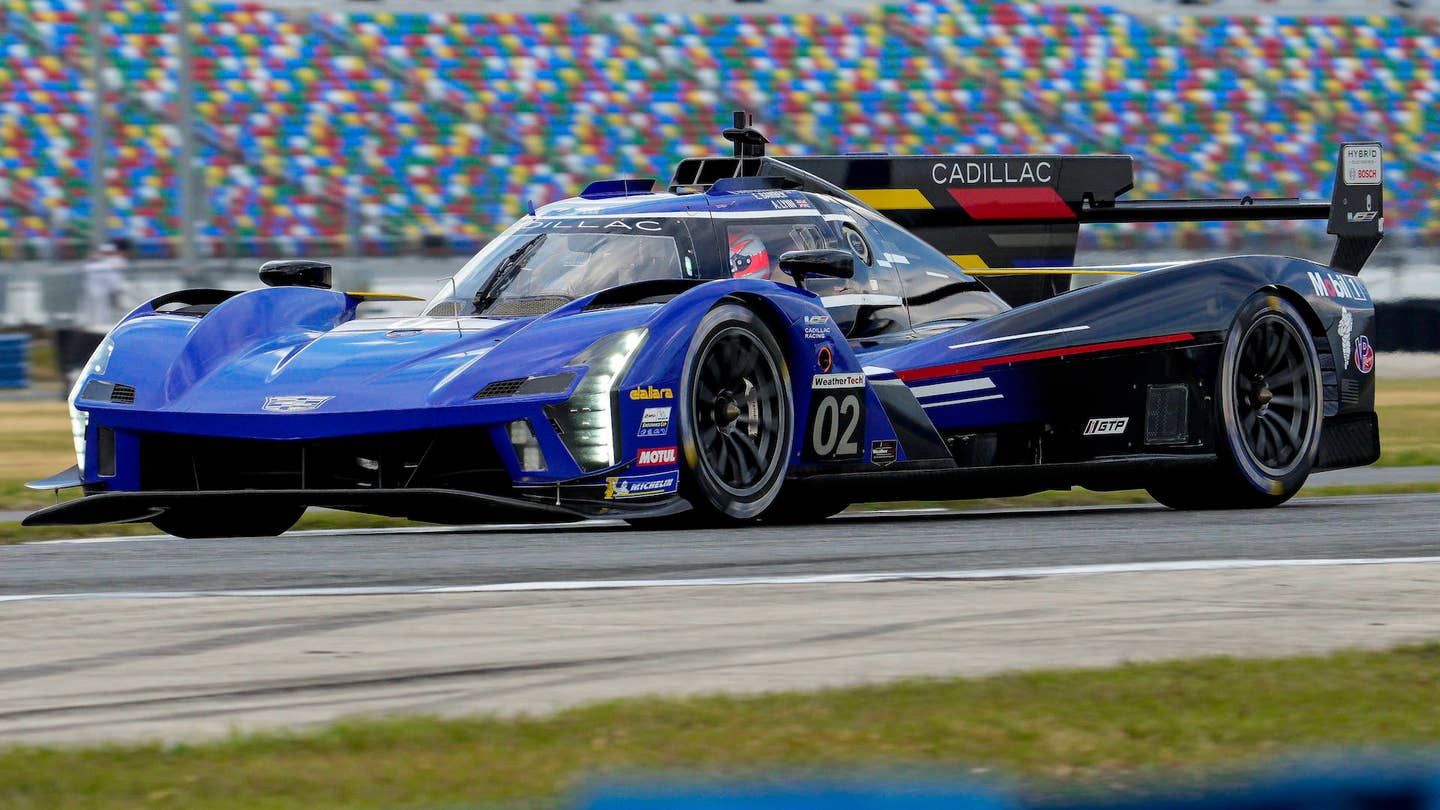How Acura, BMW, Cadillac, and Porsche LMDh Engines Are So Different
Some are V6s and some are V8s, but they all want to go fast as hell and not suffer any issues over the course of 24 hours.

Most racing series out there define every single detail pertaining to the engine a competitor can run down to a tee. Many spec series feature nearly identical cars and others like F1 are regulated intensely to create a fairer state of play. The LMDh cars that'll race at IMSA's Rolex 24 at Daytona this weekend aren't like this, however. These prototype race cars can have almost any engine they please as long as they meet a certain power level, among other details.
Four LMDh cars from major auto manufacturers—Porsche, BMW, Cadillac, and Acura—are going racing this weekend for the first time at the famed 24-hour race. And as I'll explain below, each one of them generates power very differently.
V6 vs. V8
Four teams are running a total of nine LMDh cars, seven of them powered by V8s and two by V6s. The pole-sitting Acura ARX-06 is running a minuscule 2.4-liter V6, and even the V8s are diverse in nature. Both BMW M-Hybrid V8s and Porsche's 963 have gone for flat-plane turbocharged power units, but BMW's is just 4.0 liters as opposed to Porsche's 4.6. Cadillac's entry, the V-LMDh, is the odd man out. It's the biggest engine on the grid at 5.5 liters. It's also the only cross-plane V8 and the only naturally aspirated entry. It does not sound like the other entries.

All of the engines feature dual overhead cams and all of them make a maximum of 670 horsepower when combined with a spec hybrid system. The hybrid system consists of a motor generator built by Bosch integrated into the car's Xtrac gearbox. The battery is provided by Williams Advanced Engineering.
All vehicles in the GTP class have a minimum weight of 2,270 pounds, meaning they will all have pretty much the same power/weight ratios assuming the manufacturers hit their weight targets. The interesting differences will come down to how the various machines deliver their power—and because of the length of the race, reliability will also play a huge factor. Despite producing the same grunt as a peak figure, all of the engines will doubtlessly have different power/torque curves. Some might offer more area under the curve, i.e., more power over a wider range, while others could be pretty peaky.
The sounds emanating from the race will be very different from other series which all feature cars running very similar engines. The competition is bound to be interesting as a result, too. It will get even more exciting when two of these cars, the Cadillac and the Porsche, head to the 24 hours of Le Mans in June to compete against automakers Toyota, Ferrari, and Peugeot, as well as machines from Glickenhaus and Vanwall. Until then, though, we have the Rolex 24 to enjoy this weekend.
Got a tip? Email us at tips@thedrive.com
